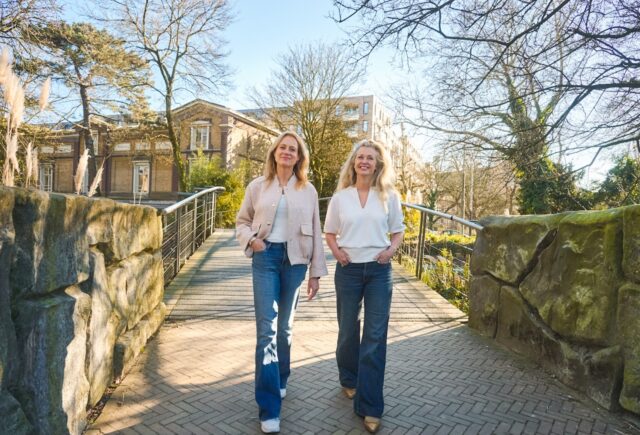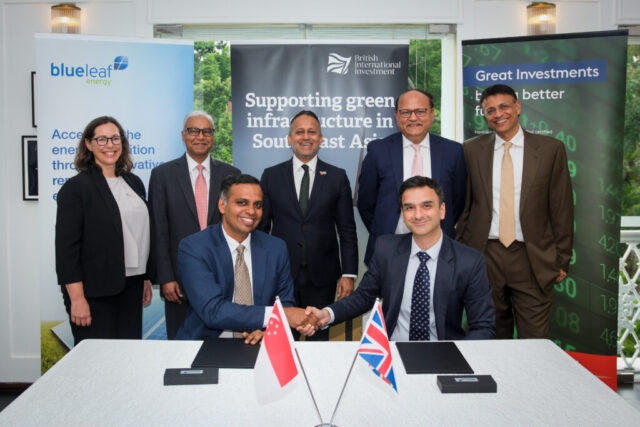The circular economy to keep the planet’s precious resources in productive use for longer is entering popular consciousness. EU policies are driving investment opportunities in getting rid of waste.

In short
- Joined-up EU policies are having a ‘supercharging effect’, helping to accelerate the circular economy transition.
- The EU’s New Circular Economy Action Plan is one of the main building blocks of the EU’s Green Deal.
- Earlier this month, the EU announced its Zero Pollution Action Plan.
Circular or regenerative economic ideas have thrown linear ‘take-make-dispose’ economic ideas – a throwback from the Industrial Revolution – in the proverbial waste bin. The circular economy closes the loop on resource use by encouraging so-called cradle-to-cradle ideas for ‘remaking the way we make things’.
The term was coined by German chemist Michael Braungart and US architect William McDonough, who published a book with the same title in 2002. It brought the world’s attention to the upside of upcycling over, say, recycling.
Co-founding partner of Circularity Capital, Jaimie Butterworth, forecasts a worrying megatrend coming down the line as a growing global middle-class – estimated by Knowledge4Policy to reach 5.5 billion by 2030 – adopts Western consumer habits.
“Effectively, there are more people in the world buying more stuff and this causes various problems – from biodiversity loss and water issues to plastic pollution, and climate change,” Butterworth said. “Each of these issues has knock-on effects for social and political life as the planet becomes more stressed.”
Getting rid of waste
The most important thing we can do, the former CEO of the Ellen MacArthur Foundation tells Impact Investor, is “move away from the existing wasteful linear economic model and accelerate the transition towards a fresh approach that is more restorative by design.”
A narrative that focuses on urging consumers to buy and do less is inherently limited as the planet’s population of would-be consumers grows, he suggests.
Responsibility needs to pivot from consumers alone to a circular consumer-producer relationship, embodied in concepts such as extended producer responsibility (EPR) for environmental impacts.
This is a marked evolution in circular economy thinking, which now asks how waste can effectively be designed out of the equation. It impacts product design and packaging, but also how easily things can be repaired, remanufactured, refurbished (or upcycled) rather than simply recycled and scrapped.
A big (green) deal
While concerns about things like plastic waste and over-packaging have been around for some time, it took the European Union a few years to seed its early circular economy ideas, culminating in the Circular Economy Package (2014) and then its first Circular Economy Action Plan a year later.
By the time it published an updated version in 2020, circular economy-thinking had unpacked Europe’s linear economic planning for good. In Europe at least, ‘regenerative models’ like this entered the mainstream with the adoption of the EU’s Green Deal to become a sustainable, climate-neutral economy by 2050.
Butterworth was an early advocate of circular models as part of the team that set up the Ellen MacArthur Foundation. He ran it as CEO for five years before co-founding Circularity Capital in 2015 (see ‘Investing as a theory of change’).
He acknowledges how joined-up EU policies are having a “supercharging effect”, helping to accelerate the circular economy transition, but stresses that “investment opportunities don’t have to wait for legislation or government intervention to garner a positive impact”.
For his company, the UN’s 17 Sustainable Development Goals are a better file rouge for what can be achieved: “They set out a series of things needed to address growing global challenges around climate, food waste, poverty, etc.”
The Commission also recently released its strategy for a climate-resilient Europe, which augurs radical changes for businesses and their investors. It has earmarked at least €100bn through its so-called ‘just transition mechanism’ (2021-2027) to help the most affected regions and polluting sectors make some potentially painful adjustments.
Investment support for industrial innovation and green technologies is a priority as is rolling out cleaner, cheaper and healthier forms of private and public transport, cleaning up the energy and building sectors, and efforts to improve global environmental standards. These could well pave the way for piggyback investment potential.
Zeroing in on the (plastic) problem
Restoring biodiversity and setting near-zero pollution targets for air, water and soil are natural corollaries of a Green Deal that values circular economy practices.
The announcement on 13 May of the EU’s Zero Pollution Action Plan is the latest move to achieve that. Indeed, ‘Zero pollution for healthier people and planet’ is the theme of this year’s EU Green Week, from 31 May to 4 June.
The plastics industry is a natural focus of attention for many countries. Europe produces about 58 million tonnes of the stuff a year, 25 million of which ends up as ‘waste’. Only 30% is collected for recycling, the rest is incinerated or dumped in landfill. Large quantities end up as marine litter.
In 2018, the EU launched its circular strategy for plastics, with ambitious targets to change the way plastic products are designed, used, produced and recycled. It banned single-use plastics outright in 2019.
There is a lot of work across the plastics value chain to be done before this can be achieved. That also means potential investor opportunities. Good signs are emerging in the use of robotics and artificial intelligence to improve plastics sorting. Better still, according to Butterworth, “Stop using fossil-based packaging altogether.”





